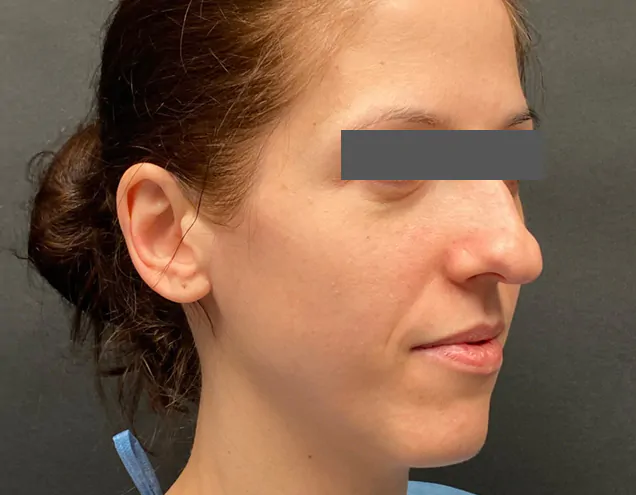Correction of post-cleft nasal deformity

Craniofacial malformations, resulting in facial distortion, very often is nose concerned. The most common defect, which also affects its distortion, is a cleft lip, the maxillary and palate alveolar process. It can be one-sided (then is called the “hare’s lip”) or bilaterally (colloquially it is called “wolf’s mouth”).
It used to be a stigmatizing ailment – people disfigured in this way struggled with a huge lack of acceptance and complexes – now, however, thanks to the achievements of medicine and more and more advanced technology, it is possible to eliminate it. For this, multi-stage plastic surgery is performed – thanks to which it is possible to obtain harmonious facial features and bite repair. The problem accompanying people with cleft palate is speech impairment, which is why these types of treatments improve their quality of life and allow them to normal functioning.
In the case of post-cleft nasal deformity, its final surgical correction is possible to be performed only after the patient turns 16 – that is, when the nose stops growing. During the procedure, the surgeon reconstructs improperly developed scaffold elements by transplanting cartilage from the septum of the nose, ear or (much less often) from the costal cartilage.
It should be emphasized that the effect of this type of surgery will never be perfect, due to the fact that it is severe deformity – nevertheless patients are extremely pleased with the improved function as well the appearance of the nose.
Before the surgery
Before the procedure, there is a consultation with the doctor, during which he conducts with the patient his general health history, past illnesses, constantly taken medications, etc. The patient’s expectations and potential side effects are then discussed. The scope of surgery and post-operative care is also planned and finally agreed the date of the operation.
The patient is also asked to perform the following tests:
- tests of bleeding time and blood clotting (coagulation system),
- morphology with smear,
- blood groups,
- general urine,
- creatinine,
- ECG,
- anti Hbs,
- anti HCV,
- ionogram,
- fasting glucose
- other tests prescribed by your doctor.
The course of the operation
The procedure is performed under general anesthesia (anesthesia). During the operation, the surgeon cuts the skin on the post of the nose, thanks to which it is possible to reach all the structures that shape it. Then he cuts out some elements of cartilage and / or bone, put them in appropriate position, and then plasty the tip nose and turbinates. He often straightens the nasal septum on the way.
Convalescence
After the procedure, the patient is hospitalized for 24 hours. After this time, he may leave a clinic with dressings: plaster on the outside of the nose and stabilization dressings on the inside. Stabilization dressing is removed 3 days after the procedure, while the plaster remains for about 2 weeks – and for the next 2 days the patient puts on an additional dressing. You should take into account the occurrence of swelling, bruises, hematomas – which will disappear over time.
Treatment effects

Before treatments
